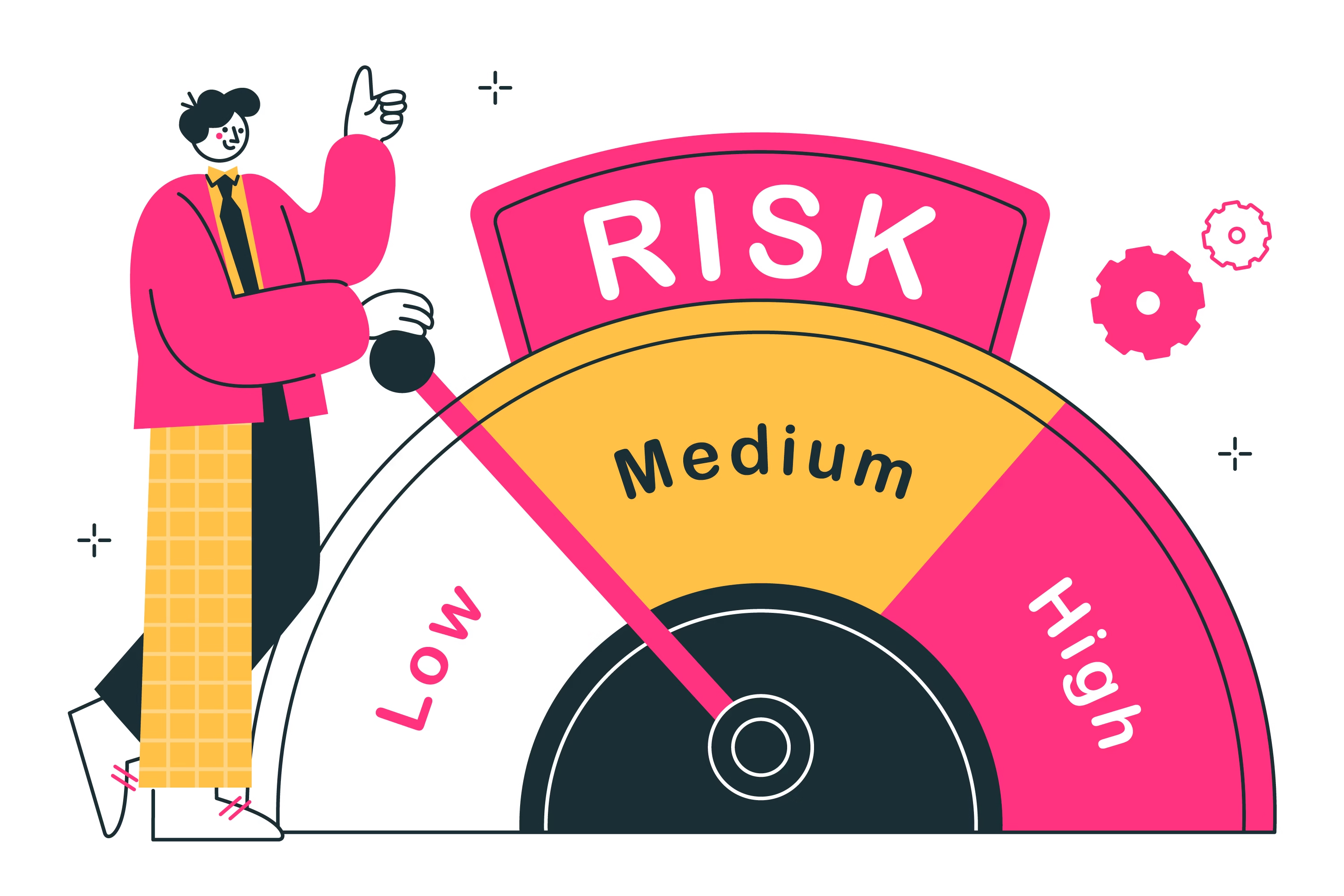
Risk in Investing and Its Relationship with Potential Returns
Investing can be a profitable venture, but it comes with a certain level of risk. When you invest, you put your money into a financial asset in the hopes that it will grow over time. However, this growth is never guaranteed. In fact, many investments come with the possibility of losing money. This is where risk plays a critical role in the world of investing.
Risk in investing is defined as the uncertainty of returns. In other words, risk refers to the chances of an investment’s actual return differing from the expected return. The concept of risk is intricately tied to the potential returns of an investment. The higher the risk, the greater the potential for higher returns, but also the higher the possibility of loss.
So, how does this relationship between risk and return work? This article will break down the relationship between these two concepts and explain how investors can assess risk when making investment decisions.
What is Risk in Investing?
Risk in investing refers to the chance that the investment you make will not yield the returns you expect. It encompasses the potential for both losses and gains. While every investment carries some degree of risk, the amount of risk varies depending on the asset and market conditions. For instance, stocks are generally riskier than bonds, and investing in a startup company carries more risk than investing in an established corporation.
Risk can be classified into several categories, including:
- Market Risk: The risk that the value of your investment will decrease due to overall market movements.
- Credit Risk: The risk that a company or government entity will default on its debt obligations.
- Liquidity Risk: The risk that you may not be able to sell an asset quickly enough to avoid a loss.
- Inflation Risk: The risk that inflation will erode the purchasing power of your returns over time.
Risk-Return Trade-Off
The relationship between risk and return is a fundamental principle of investing. In general, the higher the risk of an investment, the higher the potential return. Conversely, safer investments tend to offer lower returns. This is referred to as the risk-return trade-off.
For example, let’s compare two investment options:
- Bonds: Government or corporate bonds are generally considered low-risk investments. They provide a fixed income over time, and the risk of losing money is low. However, the return on investment is typically lower compared to stocks.
- Stocks: Stocks, particularly those of smaller companies, carry a higher level of risk. The value of a stock can fluctuate significantly due to various factors, including market trends and company performance. However, stocks generally offer higher potential returns in the long run.
The risk-return trade-off is critical because it helps investors decide where to allocate their funds based on their risk tolerance. Some investors are risk-averse and prefer stable, low-risk investments, while others are willing to take on more risk for the chance of higher returns.
Types of Investment Risk
When assessing investments, it’s important to understand the different types of risks involved. Each type of risk can impact your potential returns in various ways. Let’s take a closer look at some of the most common types of investment risk.
1. Market Risk
Market risk is one of the most common types of risk investors face. This risk arises from factors that affect the entire market, such as economic downturns, political instability, or natural disasters. For example, during the 2008 financial crisis, global stock markets took a massive hit, causing many investors to lose a significant portion of their wealth.
While market risk affects nearly every investment to some degree, some assets are more susceptible to market risk than others. Stocks, for instance, tend to be more volatile during times of market instability. On the other hand, bonds and other fixed-income securities are generally more resistant to market risk.
2. Credit Risk
Credit risk refers to the possibility that a borrower may not repay their debt obligations. For investors holding bonds, credit risk is a significant concern. If a company or government entity defaults on its bonds, investors could lose their investment.
To assess credit risk, investors often look at credit ratings issued by agencies like Standard & Poor’s, Moody’s, and Fitch. These ratings provide a clear picture of the creditworthiness of a borrower. High-risk borrowers will have lower credit ratings, which typically result in higher yields to compensate for the added risk.
3. Liquidity Risk
Liquidity risk is the risk that you may not be able to quickly buy or sell an asset without impacting its price. For example, if you own shares in a small company or a property that is not easily tradable, you may find it difficult to sell your investment quickly at a reasonable price.
Liquidity risk can impact your ability to exit an investment, particularly if the market for that asset is illiquid. This is why investors often consider liquidity when choosing investments, especially if they anticipate needing to access their funds quickly.
4. Inflation Risk
Inflation risk refers to the risk that inflation will reduce the purchasing power of your returns. Over time, inflation erodes the value of money, which means that even if your investment grows, the real value of your returns may decrease.
For example, if you earn a 5% return on an investment but inflation is running at 3%, your real return is only 2%. Inflation risk is especially important for long-term investors who need to ensure their investments keep pace with rising costs.
The Role of Risk in Determining Returns
Risk plays a crucial role in determining the potential returns on an investment. This is because investors demand higher returns to compensate for taking on higher risk. The relationship between risk and return can be seen in a variety of investment options, including stocks, bonds, real estate, and even commodities.
For instance, let’s consider the historical performance of the stock market. The average annual return for the S&P 500 Index, which represents the overall U.S. stock market, has been about 10% over the long term. However, the stock market is highly volatile, and investors can experience significant losses in the short term. For example, during the financial crisis of 2008, the S&P 500 lost over 37% of its value in a single year.
On the other hand, U.S. Treasury bonds, which are considered a low-risk investment, have historically provided much lower returns—around 2% to 3% annually. However, the risk of losing money on Treasury bonds is minimal, as the U.S. government backs them.
This disparity in risk and return highlights the importance of understanding the level of risk associated with an investment. Investors who are willing to take on more risk may see higher potential returns, but they must be prepared for the possibility of losses.
How to Assess Risk in Investing
Assessing risk is an essential step in making informed investment decisions. Investors must determine their risk tolerance, the level of risk they are comfortable with, and their long-term financial goals. Here are a few methods for assessing risk:
- Risk Tolerance: This is the amount of risk an investor is willing to take on. Risk tolerance varies from person to person and is influenced by factors such as age, financial situation, and investment objectives. Younger investors, for instance, may be willing to take on more risk in exchange for the potential for higher returns over time.
- Diversification: Diversifying your portfolio across different asset classes (stocks, bonds, real estate, etc.) can help reduce risk. By holding a mix of assets, investors can offset the losses in one area with gains in another.
- Risk-Return Analysis: This analysis involves evaluating the potential returns of an investment in relation to the risk involved. For example, a high-risk investment with a very high potential return may be appealing to some investors, but it may not be suitable for others who prefer stability.
Common Investment Strategies to Manage Risk
There are several strategies that investors can use to manage risk. Here are some of the most common:
- Asset Allocation: This strategy involves dividing your investments among different asset classes (stocks, bonds, real estate, etc.) based on your risk tolerance and financial goals. Asset allocation helps reduce risk by ensuring that your portfolio is not overly exposed to one type of asset.
- Dollar-Cost Averaging: Dollar-cost averaging involves investing a fixed amount of money at regular intervals, regardless of market conditions. This strategy helps reduce the impact of market volatility by spreading your investment over time.
- Risk-Adjusted Returns: Investors can assess the risk-adjusted returns of an investment by looking at metrics like the Sharpe Ratio. This ratio compares the return of an investment to its level of risk, helping investors understand if they are being adequately compensated for taking on risk.
FAQs About Risk in Investing and Potential Returns
What is the relationship between risk and potential returns in investing?
Risk and potential returns are directly related. Generally, the higher the risk of an investment, the higher the potential return. However, higher risk also means a greater chance of loss, so investors must carefully consider their risk tolerance before investing.
How can I manage risk in my investments?
You can manage risk by diversifying your portfolio, setting realistic investment goals, and using strategies like asset allocation and dollar-cost averaging. Regularly reviewing and adjusting your portfolio is also important for managing risk.
What are the different types of investment risk?
There are several types of investment risk, including market risk, credit risk, liquidity risk, and inflation risk. Each of these risks can impact your returns in different ways.
Why do higher-risk investments offer higher potential returns?
Higher-risk investments offer higher potential returns because investors are willing to take on more risk in exchange for the possibility of greater rewards. In other words, investors demand higher returns to compensate for the additional uncertainty and volatility.
What is diversification, and how does it reduce risk?
Diversification is the practice of spreading your investments across different asset classes (stocks, bonds, real estate, etc.). This reduces risk by ensuring that if one asset class performs poorly, others may perform well, helping to balance the overall risk in your portfolio.
How can I assess my risk tolerance?
You can assess your risk tolerance by considering factors such as your age, financial goals, and investment time horizon. If you are young and have a long time to invest, you may be able to take on more risk. Conversely, if you are nearing retirement, you may want to take a more conservative approach.
Conclusion
Understanding the concept of risk in investing and its relationship with potential returns is crucial for making informed investment decisions. While higher risk investments can yield higher returns, they also come with the possibility of significant losses. By assessing your risk tolerance, diversifying your portfolio, and using various strategies to manage risk, you can balance the potential rewards with the risks involved. Always remember, successful investing requires careful planning, ongoing learning, and a willingness to adapt to changing market conditions.

